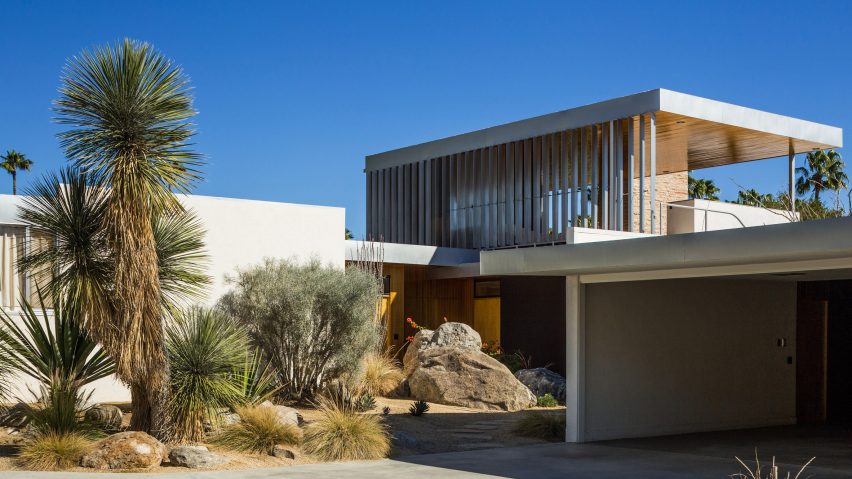
Richard Neutra's Kaufmann House epitomises desert modernism in Palm Springs
The second in our series highlighting the best buildings in Palm Springs during the city's Modernism Week is Richard Neutra's Kaufmann House, one of the most revered examples of residential architecture in the style.
Built in 1946, the boxy two-storey residence has many defining elements of modern architecture – a flat roof, pale exterior and shaded outdoor spaces – tailored to the arid climate of the California desert.
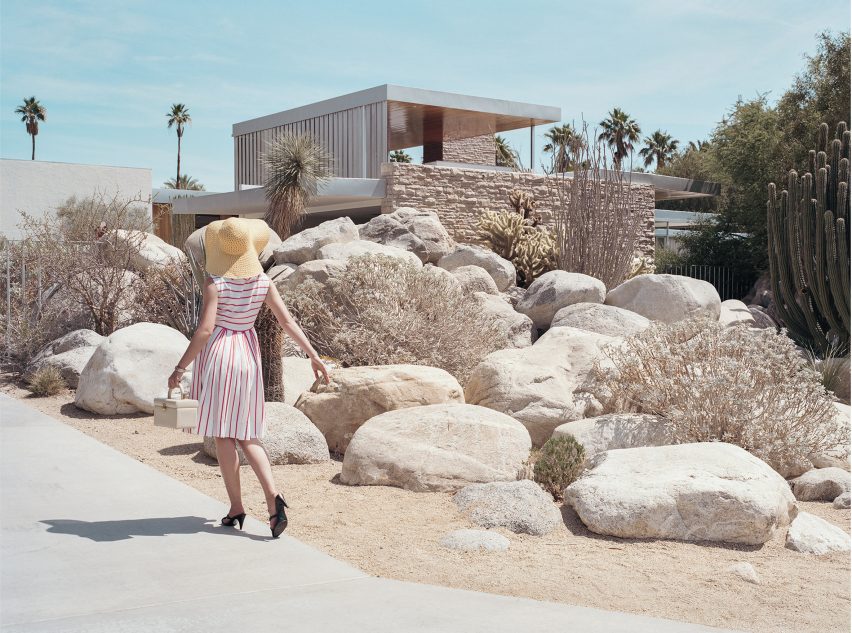
Its prominent features include slatted metal walls, which create breezy indoor-outdoor spaces alongside landscaping with large boulders, cacti, palms and sandy gardens.
The Kaufmann House was built by Austrian-born architect Richard Neutra for Edgar J Kaufmann – an American department store entrepreneur – as a vacation residence away from his Pittsburgh home. The same retail baron commissioned Frank Lloyd Wright to build Fallingwater in Mill Run, Pennsylvania, a decade earlier.
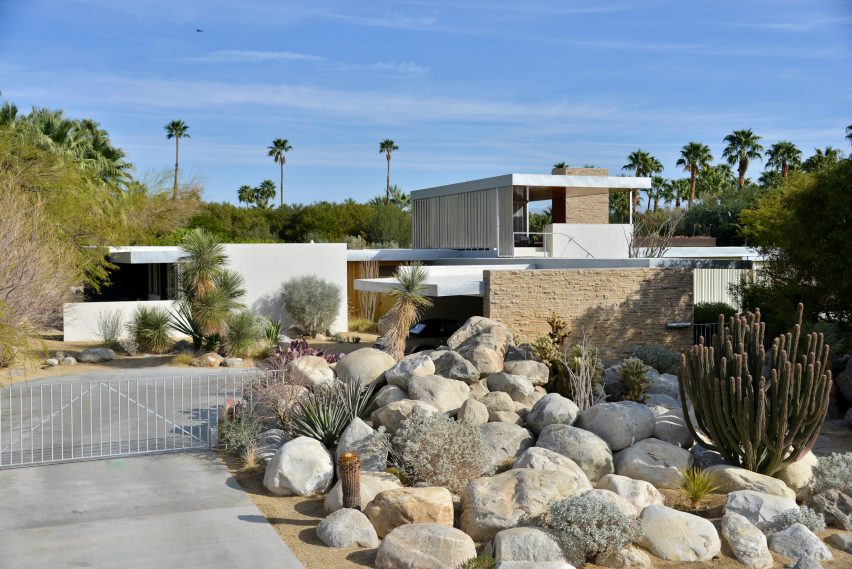
The house in Palm Springs is predominantly oriented east-west, maximising sunrise and sunset views. The layout includes five bedrooms and five bathrooms, with a grassy backyard and pool overlooking the San Jacinto Mountains to the west.
Large sliding glass doors open onto patios that are lined with vertical, moveable metal fins. These slats enable the rooms to be shaded and cooled during extreme heatwaves, and closed up during sandstorms.

The house has a cross-shaped plan, with a square living and dining room at the centre, and wings that extend out in cardinal directions. To the west is a kitchen and service rooms, accessed by a covered breezeway, with a master bedroom to the east.
The south wing comprises two covered walkways separated by a massive stone wall, while another open path leads north past a patio to a pair of guest bedrooms.
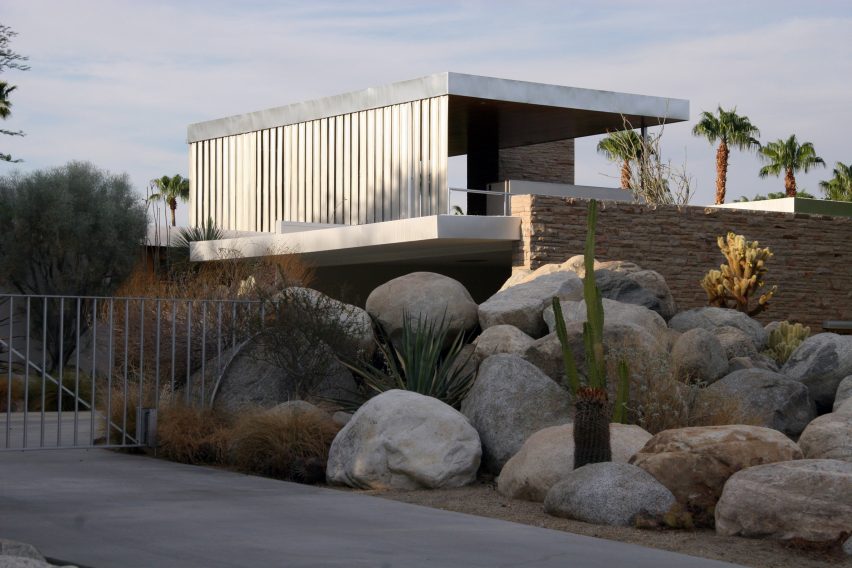
The Kaufmann House is one of the most famous buildings by Neutra, who was a key figure of the modernist architecture movement. He was lauded for designing homes that were tailored to the warm California climate, using ample glazing, boxy constructions, light facades, and outdoor living areas.
The architect championed the importance of "ready-for-anything" designs that have open, multi-use spaces, and coined the concept "The Changing House" for an article he wrote in 1947 for the Los Angeles Times newspaper.
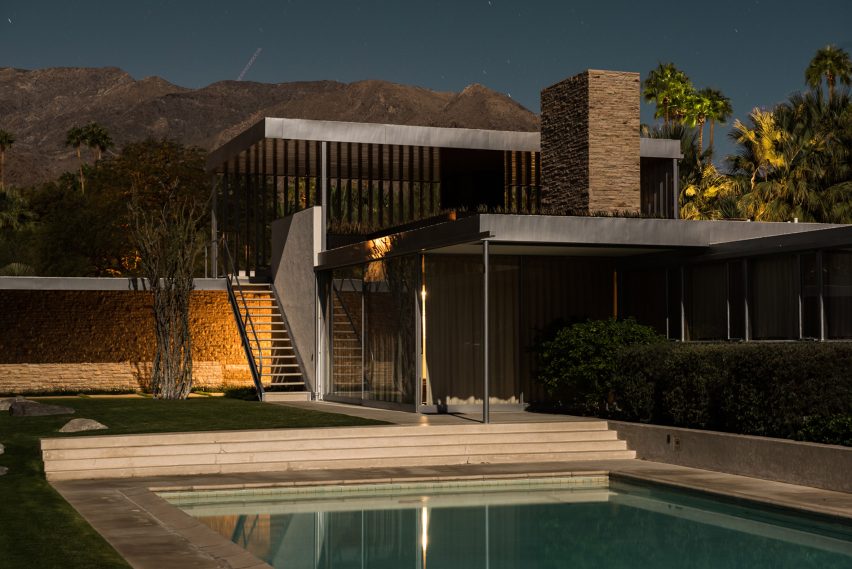
Born in Vienna in 1892, Neutra studied under architects Adolf Loos, Max Fabiani and Karl Mayreder. After serving in the Balkans in the Great War, he practised with landscape architect Gustav Ammann in Switzerland, and then Erich Mendelsohn in Berlin.
In 1923 he moved to the US, where he worked with Frank Lloyd Wright and close friend Rudolf Schindler. Neutra started his own practice in 1930, where he designed many Californian homes based around simple geometry, clean lines and airy construction.
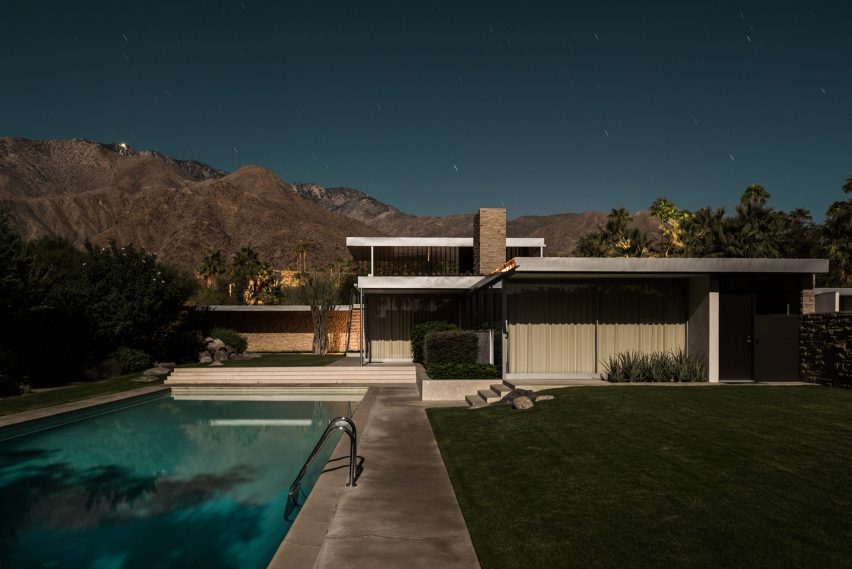
A handful of his projects are located in Palm Springs, which – thanks to its location two hours east of Hollywood – became a hotbed of modernist architecture during the mid-20th century. Movie stars and celebrities in the 1950s and 1960s hired architects to build contemporary weekend residences that were in vogue at the time.
The Kaufmann House was at one point owned by American singer Barry Manilow, and later rehabilitated by Marmol Radziner + Associates in the 1990s. Restored details include the pool house, tennis courts, and sheet-metal fascia that lines the roof.
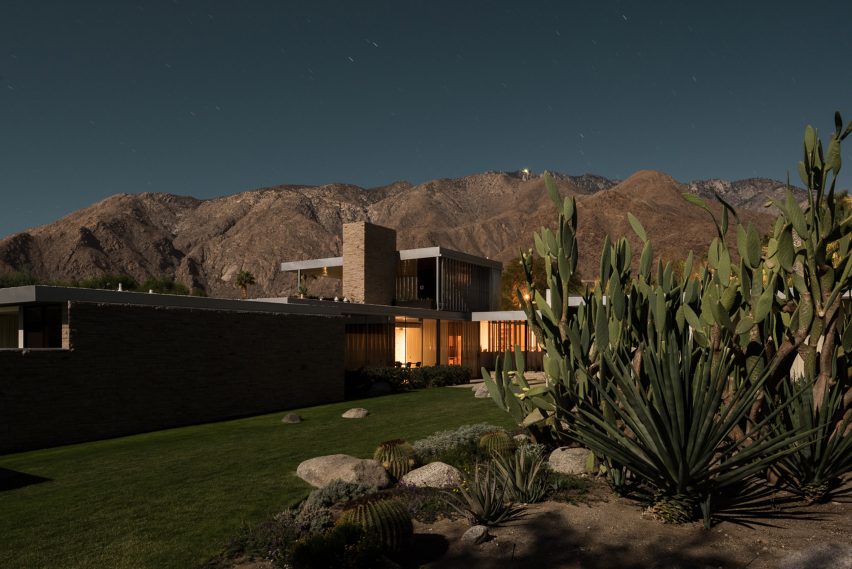
The property was also enlarged to suit Neutra's vision for a desert retreat, and replacement stonework was mined from a quarry in Utah to match the original construction.
In 1996, the house was designated a historic site by the Palm Springs Historic Site Preservation Board. It remains a private residence, but nonetheless features as a stop on architecture tours of the city, when it can be glimpsed from the street.
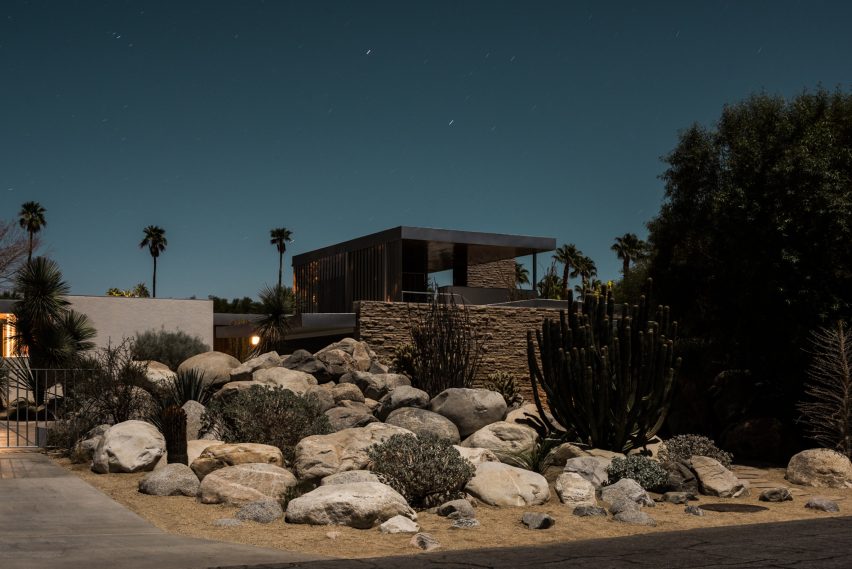
Palm Springs is celebrating its status as a modernist mecca from 15 to 25 February 2018, when the annual Modernism Week takes place.
Dezeen is publishing the most important examples of the city's mid-century buildings every day to coincide with the event, as part of a series that has already highlighted the Tramway Gas Station – now the Palm Springs Visitors Center – by Albert Frey and Robson Chambers.